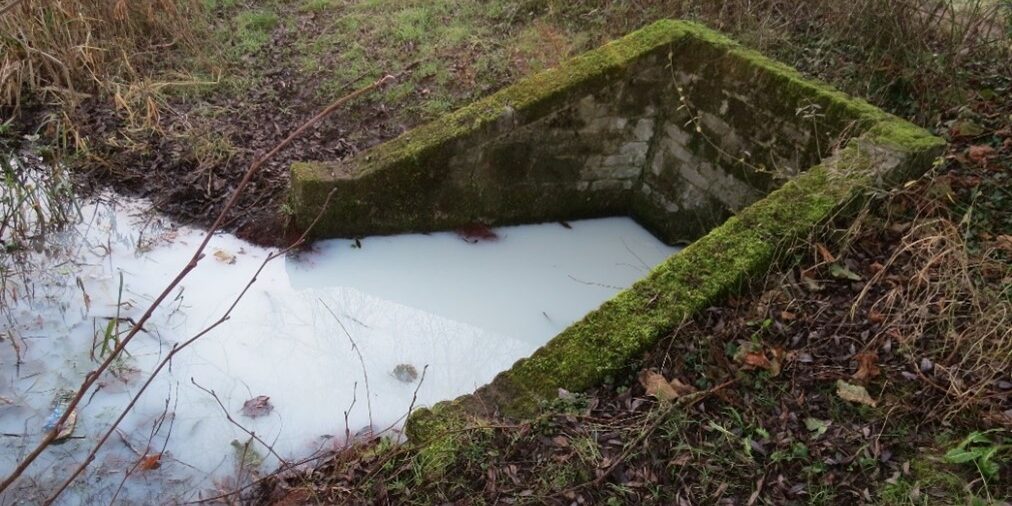This blog delves into some of the intricacies of current legislation for improving water quality, exploring potential issues with the current approach, as well as highlighting the “Green” Nature-Based Solutions and the obstacles hindering the widespread adoption of an innovative, multi-benefit, catchment based approach.
By Simon Hunter, CEO BART
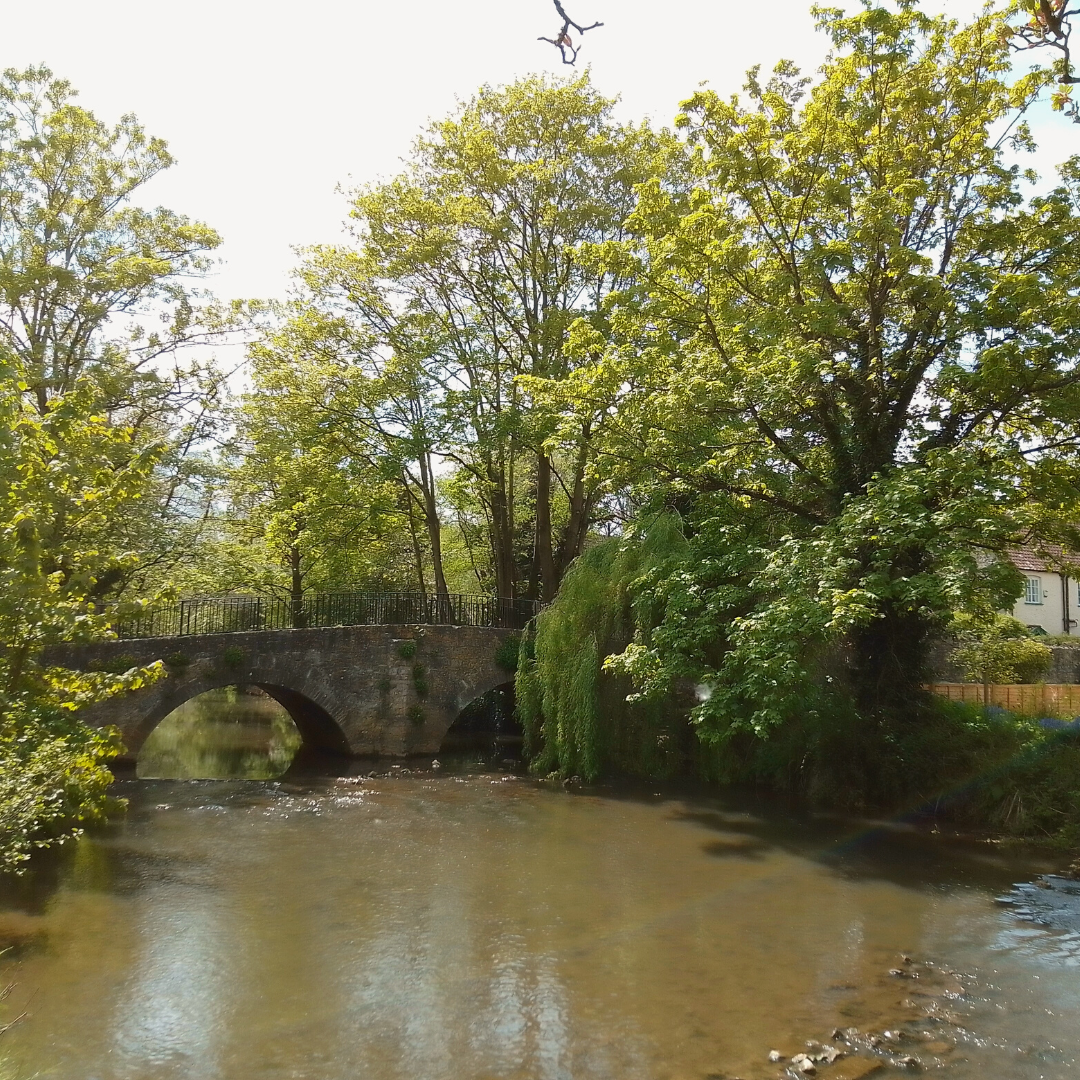
The storm overflow data for 2023 in England and Wales paints a grim picture of rivers increasingly besieged by sewage.
In England alone, untreated sewage was discharged for a staggering total of 3,606,170 hours through storm overflows – more than double the amount from the previous year (2022). Furthermore, the recently released State of Our Rivers Report 2024 by the Rivers Trust lays bare the alarming state of our waterways across England:
None of the stretches of river in England are rated as being in good or high overall health.
The surge in spills compared to the previous year is largely attributed to increased rainfall and it’s worth noting that discharges during wetter periods are likely to have a lesser impact compared to those during wet weather, when dilution is more pronounced.
Certainly, there’s no escaping the fact that our current system for safeguarding and improving our rivers is deeply flawed. It’s evident that a systemic shift is necessary to address and rectify this issue.
What is the Government and Water Industry doing to improve water quality?
In light of the significant number of Combined Sewer Overflow (CSO) spills, the Government has introduced the Government Storm Overflows Discharge Reduction Plan (SODRP). This plan outlines strict targets for the water industry, aimed at safeguarding both people and the environment, with a focus on swiftly addressing areas used for bathing, shellfish cultivation, or areas of high ecological significance.
Because of the above, water companies in England and Wales are on the brink of launching the most extensive national investment program ever seen in wastewater infrastructure—a colossal £56 billion endeavour aimed at curbing storm overflow discharges. We should be encouraged by this action right?
Yes partly, however, the current investment plans and the SODRP predominantly favour high-carbon, single-output, and short-term solutions due to legislative constraints and financial penalties imposed on water companies for non-compliance. Targets have been set on single outputs not broader outcomes and the risk of delivery and the financial consequences of missing targets will lead water companies to undertake short-term, low-risk solutions (i.e. grey infrastructure) to meet siloed targets that have been set. More information regarding this later.
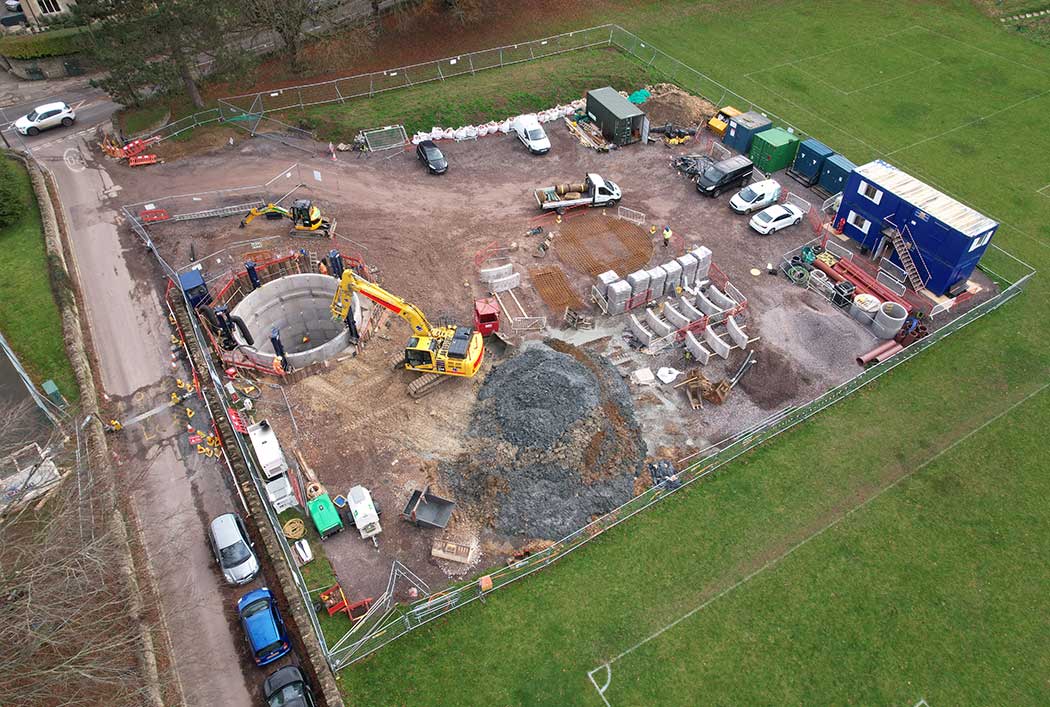
Grey, high-carbon single-output solutions are favoured
Decision makers must acknowledge the significant carbon footprint associated with this approach. Both the construction materials and the operational aspects of handling such large volumes of contaminated rainwater will generate substantial CO2 emissions – not so good for delivering the Governments climate targets. This approach also stifles innovation and hampers the adoption of outcome-based strategies, including taking a holistic approach at a catchment scale, which could offer greater benefits to the environment and communities.
By adhering to the Government’s chosen approach, there is a great risk of overlooking the broader benefits that could be achieved through Nature-Based Solutions, which would align more closely with the Government’s climate and ecological emergency objectives, while also addressing flooding and pollution issues originating from a broad range of sources.
A more holistic, catchment-based approach to addressing storm overflows, water efficiency, and carbon footprint is necessary to build resilience across our river catchments, to deal with more extreme weather events and growing populations across the country. As a nation, we also need to regard water as a limited resource and establish plans to safeguard our supply during drier months. Water, after all is essential to all life, therefore we must ensure that we find a better balance between extracting water for human consumption and sustaining healthy freshwater ecosystems.
Rather than focusing solely on storm overflows, as a rivers trust, we advocate for a paradigm shift towards measures which promote better rainwater management:
- Rainwater should be viewed as a valuable resource and captured locally for reuse, benefiting both people and the environment.
- Rainwater should be returned to the environment at the nearest point of origin or directed to nearby water bodies without mixing it with sewage.
A holistic approach to rainwater management could address multiple issues, including the climate and biodiversity crisis as well as the cost-of-living, and mental health and wellbeing crisis – by creating good quality green infrastructure for people to access and enjoy.
Regarding the water industry, it is essential to consider the environmental impact of assets beyond just the number or volume of CSO discharges…
Amidst discussions about CSO spills, it is essential to consider the environmental impact beyond just the number or volume of CSO discharges (we pick up on this point later in the blog). Factors such as pollutant concentration and the receiving environment’s capacity must also be taken into account i.e. polluting load (flow x concentration) and the ability of the receiving environment to accommodate it. So, for example, a highly concentrated discharge (with high ammonia and Biochemical oxygen demand) into a small stream will have a much bigger acute impact than a highly diluted flow into a large river.
Particularly concerning are continuous discharges from Water Recycling Centres (not just CSO spills), which often contain harmful bacteria, nutrients, and chemicals, posing risks to both river users and aquatic ecosystems. Current legislation prohibits these discharges from ensuring safe bathing water quality and these continuously discharge throughout the year, even during periods of low river flow, amplifying their potential impact on the receiving environment. Surprisingly, this aspect appears to be overlooked in the current plans, which narrowly concentrate on addressing the number of CSO spills.
We urge the Government to examine the effects of ongoing discharges from Water Recycling Centres. Merely focusing on water companies to decrease CSO spills will not be enough to enhance the health of our rivers, as the public expects. We need to adopt a more holistic and sustainable approach to protect our water bodies for the benefit of future generations.
“Green” Solutions can offer multiple benefits – to nature and society
Fortunately, there are individuals and organisations (including many NGO’s, such as the Rivers Trust movement) working tirelessly to develop and implement solutions to make a tangible difference. From rain interception initiatives at community and individual household scale, such as installation of water butts, and rain gardens, to nature-based treatment systems, such wetland creation which can improve the quality of the final discharge from water company assets.
Many of the aforementioned solutions would prevent rainwater from rushing off urban surfaces and from impacting the capacity of the combined sewerage network. Stronger legislation that would require new development sites to adopt Nature-Based Solutions to manage rainwater sustainably would be a significant step in the right direction. This outcome focused approach would enable water industry investment in solutions that have the greatest benefits, whilst ensuring that new infrastructure is designed and implemented with a focus on sustainable rainwater management – preventing additional pressures on an already failing combined sewerage system.
These solutions should be integrated into efforts to enhance river health, addressing the challenges posed by a changing climate and ecological crisis. Green solutions provide resilience and should be incorporated and scaled up throughout our river catchments, offering strategies to mitigate flooding and pollution, establish new habitats, and develop high-quality green infrastructure for communities to benefit from and enjoy.

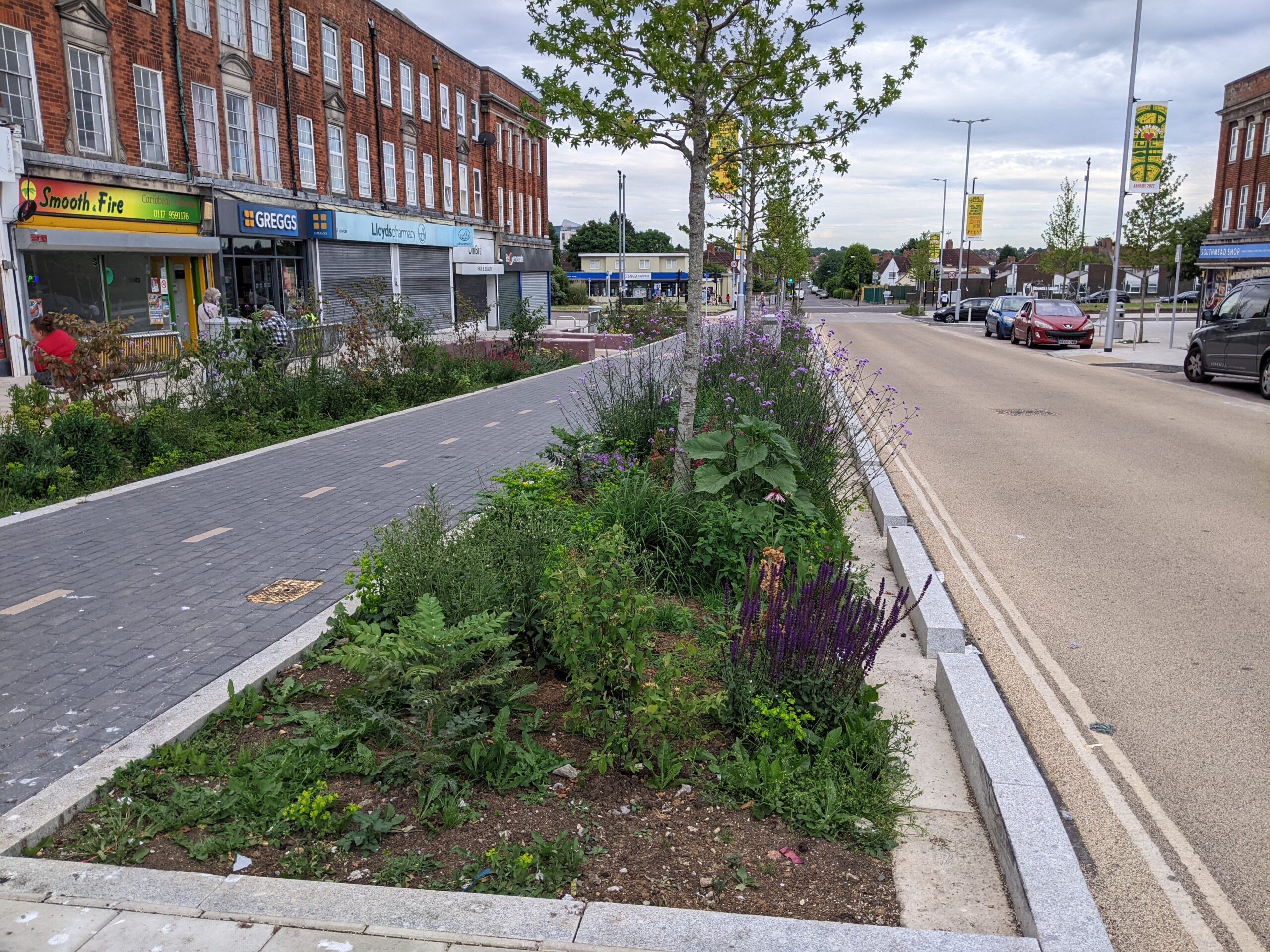

Blockers preventing the scaling up of “Green” solutions in tackling CSO spills
Question:
So, if the government is advocating for environmentally friendly approaches to reducing the impact of water company infrastructure, via the Government Storm Overflows Discharge Reduction Plan (SODRP), and we know that managing rainwater more effectively upstream of storm overflows offers numerous additional benefits, why do water company business plans continue to favour ‘grey’ attenuation solutions? The answer is two pronged…
Answer a)
The current approach to Government setting targets focuses on single outputs rather than broader outcomes.
The primary metric used is the “number of discharges a year” from storm overflows, as outlined by Defra, Ofwat, and the Environment Agency. While measuring discharge numbers is relatively straightforward, it falls short in capturing the full impact and wider benefits of investments.
Counting discharge numbers alone does not reflect environmental impact or improvements in water quality, as some overflows may be dilute and pose minimal risk to the receiving environment or public health. This narrow focus on discharge numbers also limits opportunities to address issues holistically – including those which have a greater impact than CSO’s, so this approach is very siloed.
For instance, when infrastructure improvements are made, such as highway re-profiling and drainage enhancements, it would make sense for water companies to explore options to divert drainage from combined sewers to the environment via Nature Based Solutions. However, without alignment with specific storm overflow projects, these opportunities may not be pursued due to insufficient measurable benefits and the focus on meeting discharge reduction targets – leading to less innovation and siloed working.
In essence, the current target-driven approach may hinder opportunistic interventions to separate rainwater from combined sewers unless they align with site-level output targets within the established framework.
Beyond the realm of the water industry, there’s an evident gap in planning policy concerning the integration of sustainable rain management solutions into design practices. Consequently, we continue to witness developments being constructed without adequate consideration for sustainable rainwater management.
A straightforward measure could involve incorporating water butts into every new build, allowing for the collection of water from household guttering. Scaling up this approach, across communities, could substantially reduce the burden on surface water drains caused by rainwater loading. Similarly, there’s a missed opportunity in new road infrastructure projects – why isn’t there a mandate to implement effective Sustainable Urban Drainage systems to enhance water quality and regulate the flow into our rivers and, in many cases, the combined sewerage networks?
Answer b)
Risk of delivery and the financial consequences of missing targets
In showcasing progress in tackling storm overflows, regulators (the Government) are relying heavily on discharge numbers as the primary metric. Failing to meet these reduction targets will result in significant monetary penalties, prompting companies to opt for short-term, low-risk solutions. These solutions, typically involving the construction of attenuation tanks to store combined sewage for later treatment, align with established practices and meet the specific targets set by regulators.
Several factors contribute to the preference for these solutions:
- Certainty of design: It is relatively straightforward to model the required volume of storm storage at the overflow for different performance levels. In contrast, achieving discharge number targets through separation schemes poses greater challenges.
- Certainty of construction delivery: Companies have the authority to implement grey solutions as part of their powers. Additionally, they can alter premises under certain conditions specified in the Water Industry Act. However, proposals to decentralise rainwater drainage require mutual acceptance.
- Certainty of achieving targets: In most cases, attenuation (grey infrastructure) solutions align with the discharge numbers required by regulators. However, the extent of separation needed to meet these targets depends heavily on the willingness of others to engage and cooperate in transitioning to a decentralised rainwater management approach.
The prospect of facing financial and reputational consequences for missing targets motivates companies to adopt a short-term, low-risk approach. Regulators’ output targets, including Ofwat’s Price Control Deliverables and the Environment Agency’s Environmental Performance Assessment Metric, further reinforce this approach by emphasising single-output projects rather than promoting progressive improvements over time.
Unfortunately, it seems that separation solutions such as Sustainable Urban Drainage and Nature Based Solutions have a higher deliverability risk than attenuation schemes (grey infrastructure) which is why water companies are focussing on the short term “end of pipe solutions” as opposed to tackling the issue at source – through rainwater management and green infrastructure.
More needs to be done to enable innovative and outcome-based solutions that deliver the greatest benefit to water quality and our rivers. This includes forming joined up, cross-sectoral plans linked together by strong outcome focused legislation, to address impacts of road runoff, diffuse pollution from agriculture, private septic tanks as well as misconnections. The benefits would be far reaching.

So, what do healthy resilient rivers look like?
The graphic below provides a summary from the Rivers Trust, using Environment Agency data to illustrate the multitude of sectors impacting river health across the country, based on data from Water Framework Directive legislation. You will notice that there is a multitude of impacts affecting river health, with each contributing a proportion against achieving good river health.
This blog focuses on just one of several key pillars to river health and it’s crucial to recognise that water quality (and the impact of the water industry) is just one of several vital pillars for maintaining healthy rivers.
Alongside implementing measures to support good water quality, if decision makers are really serious about creating healthy and resilient river catchments, then they must also consider whether there’s sufficient water to support wildlife throughout the year. Inadequate water levels can disrupt flows crucial for diverse wildlife, impact temperature affecting fish species, and, when combined with warm weather and high nutrients (as a consequence of water industry assets, agriculture, road runoff etc), trigger algal blooms that deplete oxygen, harming wildlife and habitats and impacting recreation.
Moreover, maintaining high-quality, connected river habitat (which Nature Based Solutions could help deliver) is essential for the unhindered movement of aquatic organisms like fish, which require access to various habitats for feeding and spawning. Many species need to migrate to tributaries for reproduction but face obstacles like weirs and sluice gates. Consequently, many die before they spawn.
Sectors impacting river health
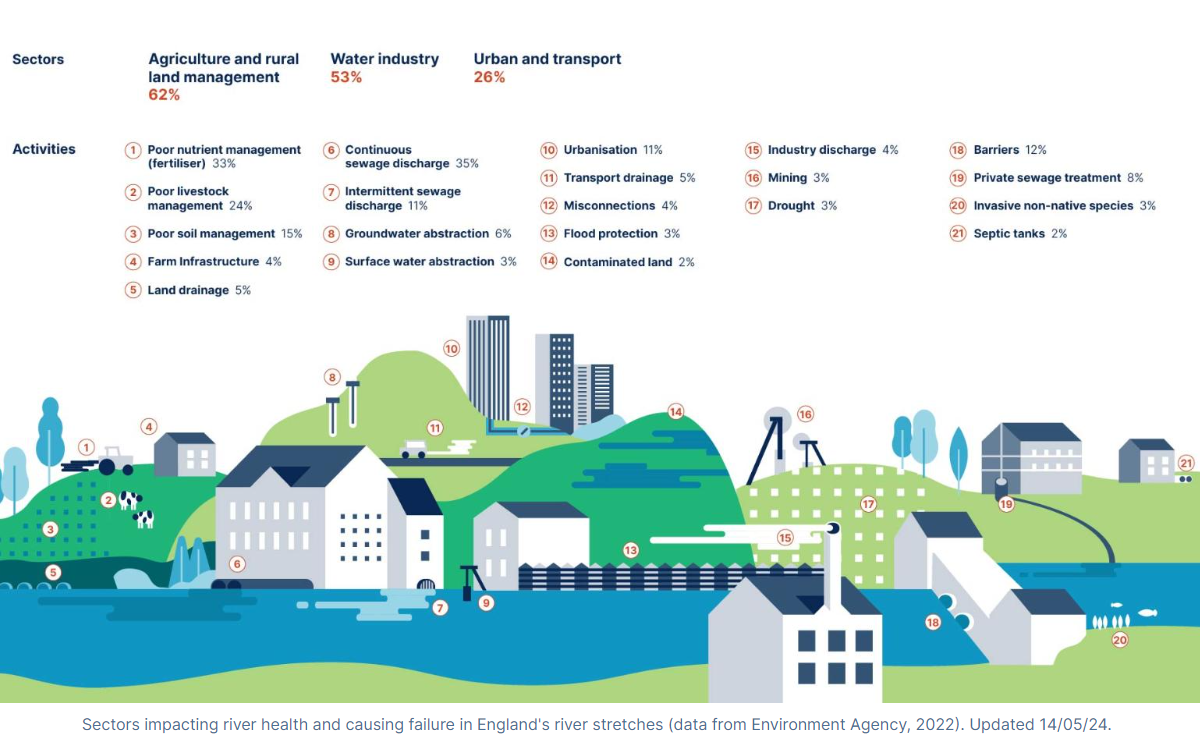
To Summarise
Although water quality is a significant concern, solely targeting the reduction of CSO spills will not be adequate on its own to ensure the health of our rivers. Additionally, the government must address other sources of pollution (road runoff, agriculture, industrial), improve river habitats, and ensure adequate water levels nationwide. With climate change exacerbating these challenges, a holistic, cross-sectoral integrated catchment approach is imperative for safeguarding river health.
Much work lies ahead, but our rivers and their biodiversity possess resilience, capable of rebounding if provided with the necessary conditions. Both our communities and wildlife deserve healthy rivers, urging our government to advocate for them and enact legislation to bring about widespread change.
To move forward progressively, we need transparency regarding both the technical and legal aspects of sewage systems, as well as campaigns that seek justice for our rivers and most importantly highlighting the solutions and the current blockers preventing healthy rivers.
What can you do to help?
With elections just around the corner, I urge you all to speak to your local candidates about how their party plans to address all types of pollution in our rivers. You can reach out via email, social media, or in person if they visit your doorstep. Additionally, keep an eye out for terms like “nature-based solutions,” “nature recovery,” and “environmental regulation and monitoring” in party manifestos.
You may also consider asking them the following broader questions around how they are going to improve river health:
- How will they work with nature, to implement “Green” solutions to improve river health and tackle climate change?
- Will their party boost funding for regulators to strengthen enforcement so polluters are made to pay for their pollution?
- How will your party open up rivers and blue spaces in our towns and cities for health
and wellbeing? - How will your party support farmers & businesses manage their land sustainably
for water?
You can also contribute to raising awareness about the issues affecting our rivers and the solutions available. At home, you can make a difference by using water more wisely and designing gardens that act as sponges, storing water instead of covering them with impermeable surfaces.
If you are able, please consider making a donation to support the work of the Bristol Avon Rivers Trust. We are dedicated to influencing decision-makers, raising community awareness, and taking action on the ground to improve the health of rivers for the benefit of people and wildlife.

